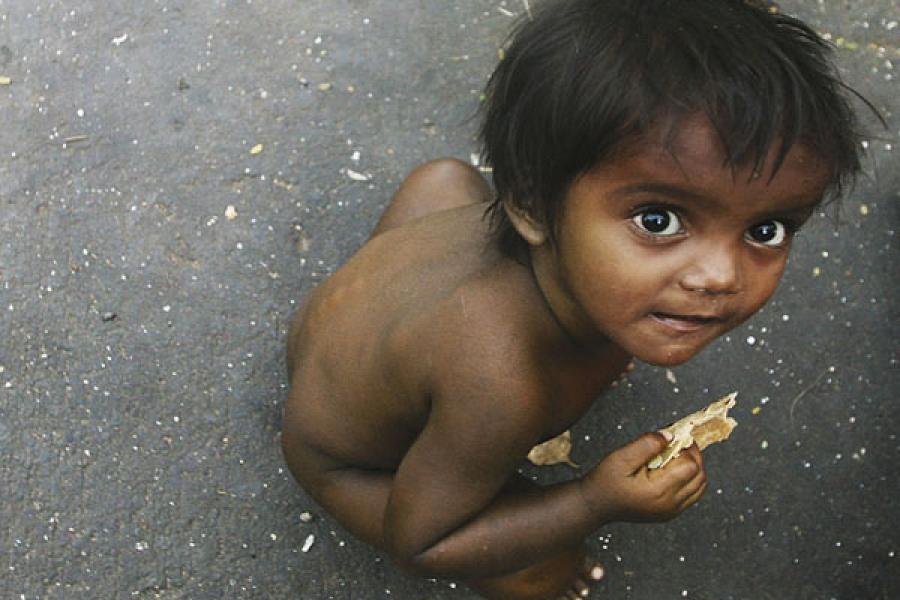
The Year that Was: What's Holding Back the Hand that Feeds?
Sonia Gandhi wants to make sure that no one goes hungry in the country. But many in the government don't seem to have an appetite for the plan
An economic superpower but a nutritional weakling. That’s how the Institute of Development Studies in the UK described India.
The note wanted to disallow states from expanding the list of beneficiaries, even if the additional cost was borne by them. It noted rather grimly that some states had expanded BPL lists and provided food grains at prices lower than public distribution system issue price. Therefore, it proposed “built-in penal provisions against such states.” The reaction to the note was strong.
The strongest protest came from the Congress president herself. In sharp contrast to the government proposal to abolish special nutritional welfare schemes like Mid-day Meal Scheme, Gandhi’s advisors proposed to expand their scope.
Yet, the administration prevailed over the Party, at least for now. At one stroke, the government chose to narrow the scope of entitlements — and also reduce the quota of food grains.
International experts do not agree with the Indian approach. Ulrich Koester, professor of agricultural economics at Kiel University in Germany says a rights-based approach is not the best idea.
No country in the world has gone this far to adopt a rights-based approach on this scale. As the legislation passes through its birth pangs, the world is closely watching this experiment. Peter Timmer, Thomas D. Cabot Professor of Development Studies, emeritus, Harvard University, says it is not possible for a country to have sustained economic development without first establishing reliable food security at the macro level.
“India is trying to do that via a rights-based approach, which has never been tried before. Other Asian countries did it with rural-oriented development strategies that reached the poor. I am sceptical that the Indian approach can work,” he says.
(Additional reporting by Neelima Mahajan-Bansal)
- This article was earlier published in Forbes India magazine dated September 25, 2009.
WHY DID WE DO THE STORY
Stories of how the government forms its policies are always fascinating because they give us a peek into the thinking of the rulers and sometimes, the internal conflicts that pull them in all directions. There was ample opportunity for both when we learned that Sonia Gandhi’s food security plan did not
find universal acceptance even in the government that she so strongly influences.
It is a unique and untested idea to provide food as a citizen right. Global experts aren’t sure it will work. So, quite understandably, it faced resistance from state governments which looked at it as the onus of the Centre. But the differences between the administration and the Congress Party were much more revealing. it was one of the rare instances when the administration overruled the party’s stand. At another level, the story gave us an exceptional opportunity to understand how and why policies, despite appearing well intended, often carry a birth defect.
WHERE DOES THE STORY STAND
The following months brought the inner conflicts in the government over the new food security law to the limelight. It has been Sonia Gandhi’s passionate theme, but she has struggled get the complete backing of the government for it. Sonia Gandhi has her own view on how many people should be covered under the scheme, how much quota must be allotted for each household and at what price the food grains sold to them. The Centre formed an empowered group of ministers in September last year.
The group’s draft isn’t very different from the initial concept note that proved contentious. As a result, it has failed to resolve the deadlock over the details. Meanwhile, Sonia Gandhi has become the leader of the newly reconstituted National Advisory Council (NAC) late last month (29th March, 2010) and immediately ensured that the proposed bill was held back at the last minute and sent for a redraft. Subsequently, it is reported that the net of beneficiaries has been widened to include an additional 100 million people, which are more in accordance with the demands of the State governments and the civil rights activists.
(This story appears in the 04 June, 2010 issue of Forbes India. To visit our Archives, click here.)
Post Your Comment















